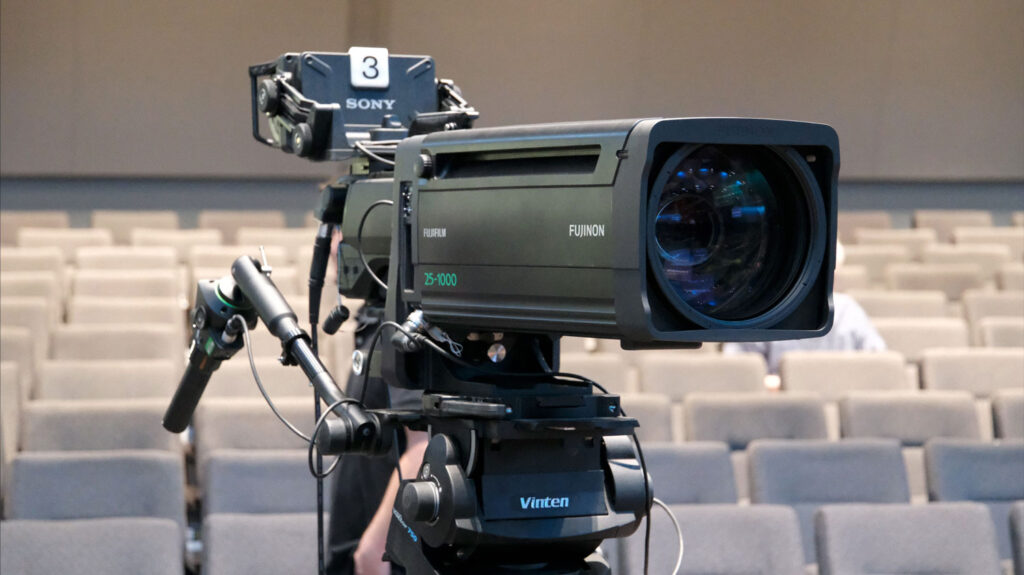
ARIA, or Automatic Restoration of Illumination Attenuation, was created to combat common issues that arise in zoom lenses in order to create a more seamless filming experience at any focal length. Zoom lenses, with their larger form factor and greater number of optical elements, have long been designed to find a compromise between optics and usability. ARIA – present in most Fujinon 4K and 8K broadcast lenses – helps reconcile these two goals by addressing two potential problems with using a zoom lens: exposure ramping and relative illumination.
Exposure ramping is apparent when an image loses brightness as a lens is zoomed from wide to telephoto. This ramping curve is part of the lens design. As a certain focal length is reached, the entrance pupil of the lens no longer widens. If there is no mechanical compensation for the entrance pupil size to conserve the amount of light entering the lens, there will be less light passing through the lens at that focal length or above. This is most apparent when changing focal length during a shot, but also can cause problems when changing focal lengths between setups because more light will be needed to match shots. Ideally, a zoom lens should not exhibit exposure ramping in order to facilitate the filmmaking process.
ARIA addresses exposure ramping by countering the lack of consistent exposure at certain focal lengths by adding gain as the focal length changes on the zoom lens. This keeps the exposure consistent no matter the focal length, wide or telephoto. The lens communicates the location on the ramping curve to the camera and the addition of gain is seamless and immediate. The image will keep a constant brightness as the lens zooms in or out.
It also allows communication between the lens and camera to adjust for relative illumination. This phenomenon happens when there is a difference in brightness between the center and edges of the image. This occurs not because of a difference in lighting across the image, but inherently in the way the camera captures the image. This natural vignette look is known as portholing or corner shading.
ARIA counteracts relative illumination by providing data on illumination at a given focal point to the camera. The camera is able to respond to the level of corner shading and correct the image so that the illumination is consistent across the entirety of the frame.
